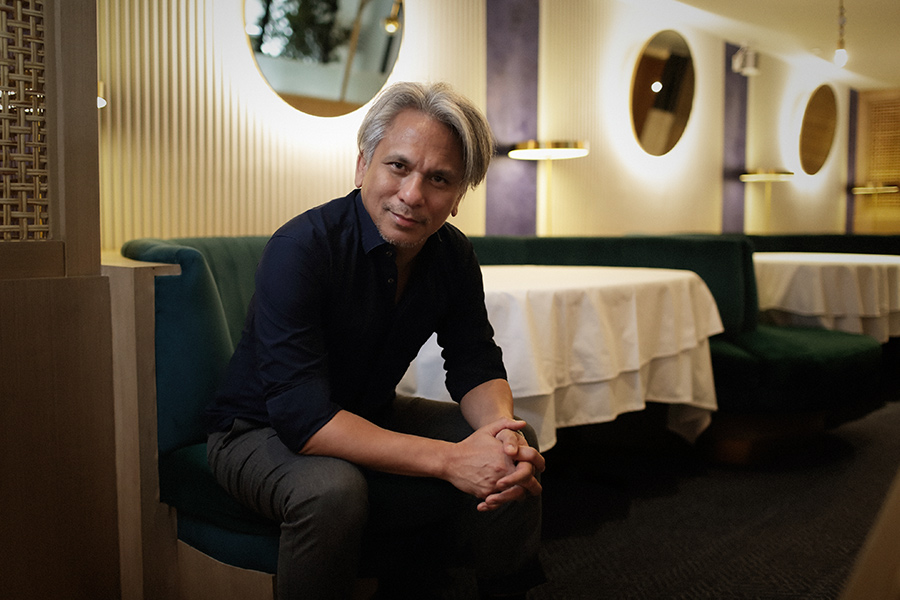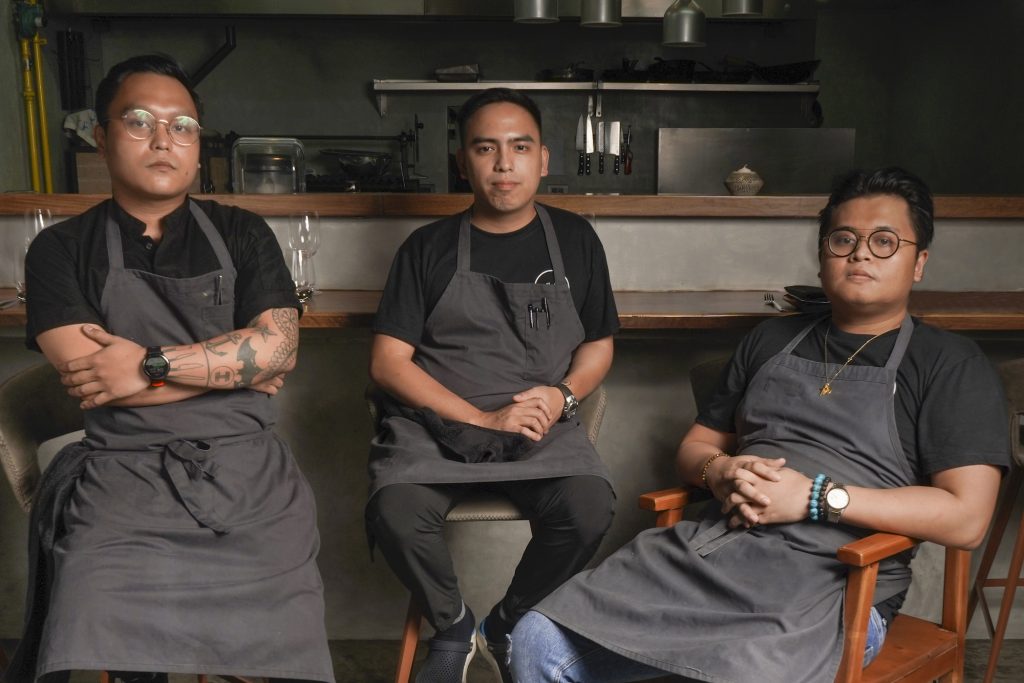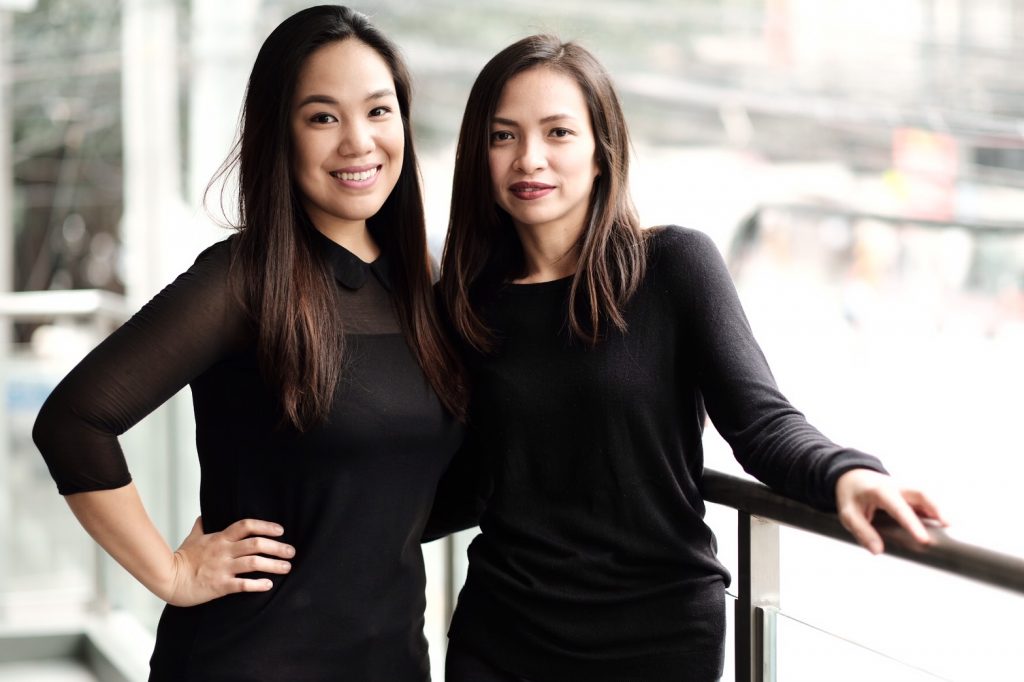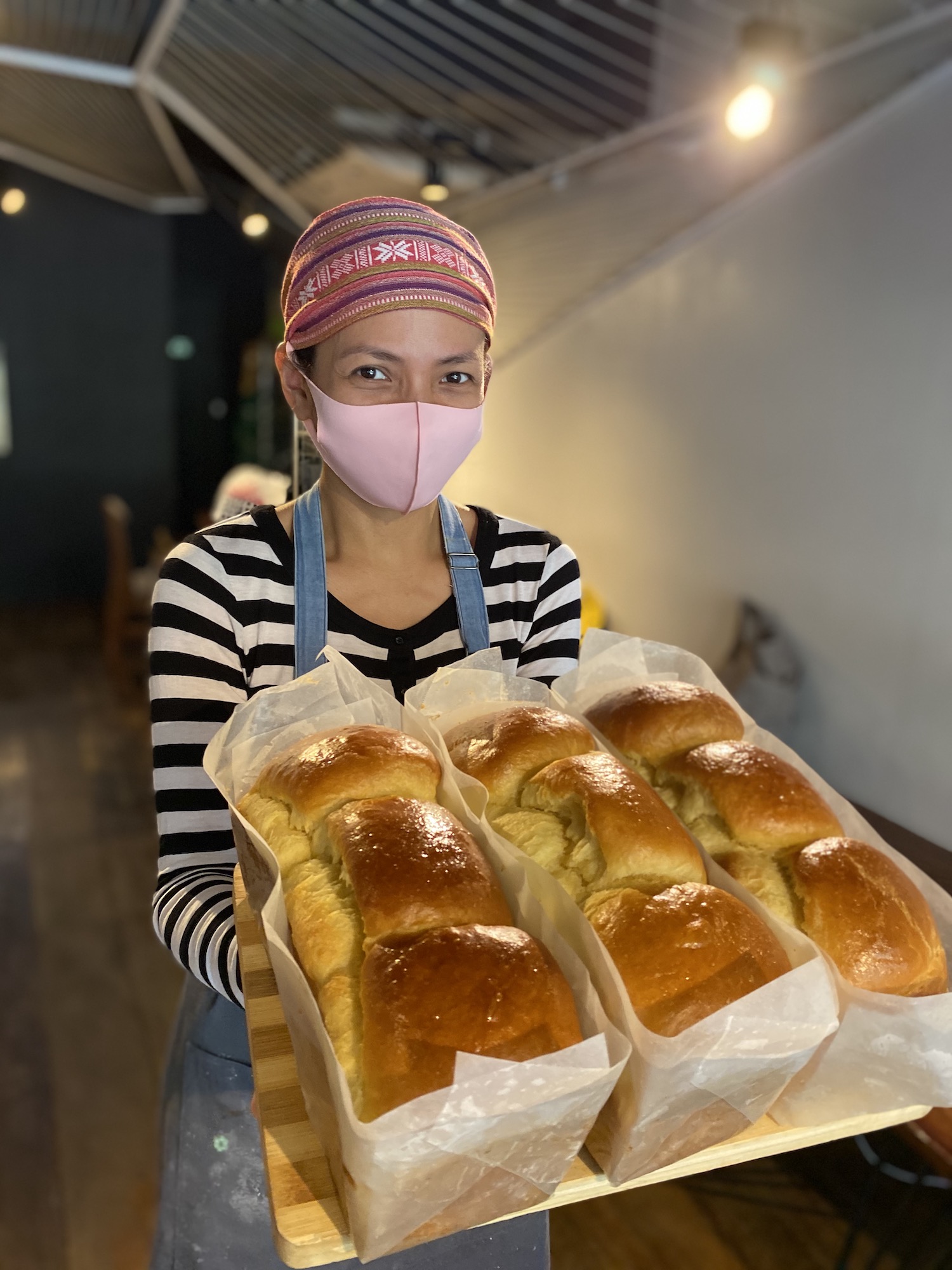Chef and restaurateur Christine Roque is thankful that her restaurant, Half Saints, gets a good view of the ABS-CBN tower. Aside from the ease it provides first-time diners in finding the restaurant, this was not a necessary detail before the pandemic. But when lockdown rendered dine-in services impossible, the tower became useful in starting and even escaping conversations with curious diners.
“When friends visit and dine in our outdoor space, get seated under the red umbrella and ask how our outdoor dining operations are going, I point to the tower and tell them it’s like dining in Paris,” Roque says. “They laugh and forget I didn’t answer their question.”
From what Roque tells me over email, it looks like business is keeping up. When they introduced “street style” dining in September (a few months after restaurants in general community quarantine (GCQ) areas were allowed to operate at limited capacity), 90 percent of their diners had only heard of the restaurant during lockdown.
Still, “how is it going?” is a tough question to answer during these turbulent times. To begin with, how does one gauge the circumstances when we still wade through uncertainty?
“It was worrying because the situation was something no one could ever plan for or expect,” esteemed restaurateur Elbert Cuenca says when asked to recall his restaurants’ last service before lockdown. “I expected customers to rush out for that one last hurrah but that didn’t happen.”
“People’s tastes and needs change and so are we as human beings,” says chef and restaurateur Christine Roque. “We evolve. Our food should reflect that as well. We all changed living in the pandemic and we’re forming new identities.”
Kevin Villarica, Kevin Navoa and Thirdy Dolatre, the chefs and restaurateurs behind Hapag, remember that they had a total of 10 guests during their last service. “It was a very weird one. Everyone knew it would be the last dinner service before lockdown,” they say.
Unlike Cuenca and the Hapag trio, Vincent Africa and Reymart Cerin, the owners and restaurateurs of neighborhood café Blocleaf, cannot recall their last pre-pandemic service. Except that they weren’t able to close the café properly, assuming that lockdown would only last a week.
But as it turns out, the lockdown continues to stretch with no end in sight. At the onset of the pandemic, the restaurant industry was one of the five industries expected to suffer massive job loss amid the pandemic. There is no clear data of how many workers lost their jobs but with the number of closures over the past year and the implementation of skeleton workforce in remaining ones, foodservice sure took—and is still bearing—the brunt of the ongoing pandemic and erratic lockdown measures.
Here’s how restaurateurs have adapted to our changing lifestyles.
Elbert’s Concepts

In January, 10 months after Luzon went into lockdown, restaurateur Elbert Cuenca had to permanently close Elbert’s Diner at Power Plant Mall. First established in 2009 as Elbert’s Cheesesteak Sandwiches before relocating to Alabang in 2014, Elbert’s Diner found its new home at the new wing of Power Plant Mall in 2018.
Cuenca says he took the spot in Power Plant for the foot traffic—but that was no longer the reality with the lockdown. Shifting to deliveries was also a struggle because “we didn’t have the benefit of the brand recognition chain operators have.”
Despite the closure, its well-loved sandwiches and burgers are available for delivery through Elbert’s Delivers, a one-stop shop for the entire Elbert’s Concepts launched in August last year. Here, customers can order from multiple restaurants under Elbert’s Concepts and have them all delivered at once.
However, he says, “the response has been quite tepid. This doesn’t really surprise me as I expected it to be challenging. With the exception of Elbert’s Pizzeria, my restaurants are more recognized for dine-in experiences, hence our food doesn’t come to mind when customers think of food delivery.”
“I learned that Filipinos in general do not go out just to eat out, unless there is an occasion to be celebrated, and that most people who eat out do so because they are already out,” says restaurateur Elbert Cuenca.
Cuenca knew this even at the start of lockdown. So, in April last year, he, chef Miko Calo and RJ Galang launched Lazy Oeuf, the sub-brand of Metronome, which offers food specifically designed for takeout and delivery. Cuenca says it has been doing well on Elbert’s Delivers. And when possible, two of his five restaurants open their doors for dine-in.
With several restaurants around the business district of Makati, what did the past year teach Cuenca?
“I learned that Filipinos in general do not go out just to eat out, unless there is an occasion to be celebrated, and that most people who eat out do so because they are already out. We all grew up eating at home, and this is what’s considered normal. Without normal activities around us, such as offices, schools, cinemas, beauty salons, etc. our market is greatly diminished,” he says.
“We can’t do much except deal with the situation we are in. ECQ is no longer new to us, so we know how to handle the situation already. We just have to sit and wait for the market conditions to return to normalcy.”
(Editor’s note: Elbert’s Cheesesteak and Sandwich has just announced its comeback where customers can order their sandwiches and specialty offerings online or at their temporary store at Elbert’s Pizzeria in Salcedo Village)
Hapag

Hapag’s current operations are largely inspired by the team’s traditions. On a regular day before dinner service, the team gathers at 4:30 pm for a staff meal aptly called Hapag Family Meal. Before the pandemic, diners only got a peek of this tradition through the Hapag Family Meal Instagram. But in May last year, Hapag extended the family meals as takeout offerings. The three say it was a challenge to “serve something new weekly to a very hard-to-please market” during the first few months in lockdown.
“We are unsure of what tomorrow brings and even unsure if guests are willing to come and dine after this said lockdown. But we will continue to pivot, do crazy things, push Filipino food and even do more takeaways. We will continue to do this until the pandemic quits on us,” chefs and restaurateurs Villarica, Navoa, and Dolatre promise their customers.
Over the past year, Hapag Family Meal took various iterations. From Korean to South American cuisine, Hapag eventually teamed up with restaurants like Ohayo Maki and Ramen Bar for a Japanese-themed menu and Sarsa for their Christmas Special. Hapag’s collaborations did not just start and end with Family Meals though. In September, they also teamed up with The Lost Bread and Auro Chocolate for a special collection of ice cream flavors, using their creativity as the primary tool in keeping the business running.
“We are unsure of what tomorrow brings and even unsure if guests are willing to come and dine after this said lockdown. But we will continue to pivot, do crazy things, push Filipino food and even do more takeaways. We will continue to do this until the pandemic quits on us,” Villarica, Navoa, and Dolatre promise their customers.
Half Saints
Arroz con pollo is one of the crowd favorites at Half Saints, so I was surprised to see them share the recipe on Instagram in May last year. But the decision to make it publicly available was part of a strategic decision.
“We had to create an entirely new experience with a hyperfocus on the product,” Roque explains. “The problem was, we weren’t active on social media before the pandemic because we relied so much on word of mouth.”
After cooking meals for frontliners at the beginning of lockdown, the restaurant turned somewhat into a production studio on the weekends of May through June last year. Roque and co-chef Jo Arciaga took turns shooting videos and co-hosting a show with the premise of making “fabulous” dishes with ingredients that are easy to procure.
Although the how-to series brought together loyal diners and curious lurkers on their page, Half Saints only produced seven videos before shifting their focus on “Afternoon Bakes.”

Launched with their brioche bread in July, “Afternoon Bakes” was conceived after the team realized that most of their products were meant to be consumed fresh and would not transport well. But some well-received products like crema de fruta, Merci Buko French cream puff and tres leches have found their way to the menu. Of course, it does not always translate to sales. “We made excellent Pan De Sal only to fail miserably in sales.”
The introduction of “Afternoon Bakes” was not only a strategy to redesign the customer experience, it also helped them maintain a creative mindset during the pandemic. “It kept us sane, happy, excited, busy and gave us something to look forward to.”
In the first two years of Half Saints, they only tweaked their menu three times. But now that they are working with a smaller team, Half Saints is coming up with new products on a weekly or monthly basis, depending on capacity. “People’s tastes and needs change and so are we as human beings,” says Roque. “We evolve. Our food should reflect that as well. We all changed living in the pandemic and we’re forming new identities.”

Blocleaf Café
When Cerin and Africa established Blocleaf in 2017, they intended to impart a well-rounded, tactile experience to their customers. The café’s appeal lies not only in its menu of homemade pastries and locally sourced coffee but also in its quaint space. But the pandemic quickly it took away.
With the tiny dining space and mandatory physical distancing, it’s impossible to replicate any intimate experience now. “Cafés are experiential spaces, so it was a challenging learning experience for us to translate that through the products we offer,” Africa says.
When the first lockdown was announced in March last year, Blocleaf’s operations stopped for the next five months. Save for a coffee bean sale at the end of March and a playlist update in July, their social media, which is now the primary touchpoint with customers, also remained inactive.
It was in August when they finally resumed operations. Like other food businesses, Blocleaf shifted to a takeout and delivery-only business at first, offering bottled versions of their drinks as well as new items—most of which were new flavors of existing dishes they already have on the menu. By September, Blocleaf opened for dine-in and further expanded with pastries like their single-origin chocolate cookies.
“The most important thing about a business is the people you work with. It’s never been more important to recognize and be thankful for their passion and dedication to sacrifice things just to make sure everything runs smoothly even with all the chaos around,” says restaurateur Reymart Cerin.
Despite the limitations, Blocleaf strived to pursue its community-oriented ethos, sourcing ingredients from local communities and engaging in initiatives like Kwago’s mystery book drive in February.
For the cafe owners and restaurateurs, keeping their café running is not only about making profit or maintaining the brand. “This pandemic pushed us back. Now, we’re just thankful we’re able to provide a livelihood to our baristas and power through this pandemic,” Cerin says. “The most important thing about a business is the people you work with. It’s never been more important to recognize and be thankful for their passion and dedication to sacrifice things just to make sure everything runs smoothly even with all the chaos around.”
“During hard times like this, it’s really important to remind ourselves why we do what we do,” Africa says. “Running on passion can be really tiring, but knowing that there are people who are still willing to support our tiny cafe, we’ll try our best to stay strong and see it through to the end.”





